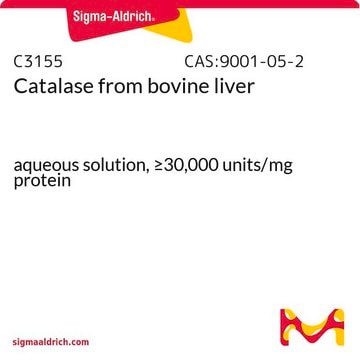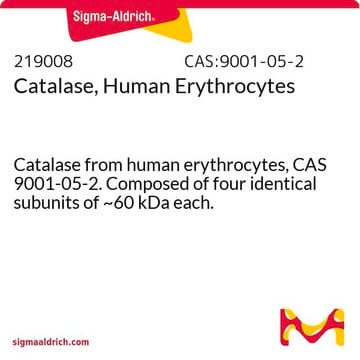C4963
Catalase−polyethylene glycol
lyophilized powder, ~40,000 units/mg protein
Sinônimo(s):
PEG-Catalase
About This Item
Produtos recomendados
forma
lyophilized powder
Nível de qualidade
atividade específica
~40,000 units/mg protein
peso molecular
PEG 5,000
composição
Protein, ~50% E405
Extensão da rotulagem
~40 mol PEG per mol protein
ligação da matriz
secondary amine linkage.
temperatura de armazenamento
−20°C
Procurando produtos similares? Visita Guia de comparação de produtos
Aplicação
Ações bioquímicas/fisiológicas
Embalagem
Outras notas
forma física
Código de classe de armazenamento
11 - Combustible Solids
Classe de risco de água (WGK)
WGK 3
Ponto de fulgor (°F)
Not applicable
Ponto de fulgor (°C)
Not applicable
Equipamento de proteção individual
Eyeshields, Gloves, type N95 (US)
Certificados de análise (COA)
Busque Certificados de análise (COA) digitando o Número do Lote do produto. Os números de lote e remessa podem ser encontrados no rótulo de um produto após a palavra “Lot” ou “Batch”.
Já possui este produto?
Encontre a documentação dos produtos que você adquiriu recentemente na biblioteca de documentos.
Os clientes também visualizaram
Nossa equipe de cientistas tem experiência em todas as áreas de pesquisa, incluindo Life Sciences, ciência de materiais, síntese química, cromatografia, química analítica e muitas outras.
Entre em contato com a assistência técnica









